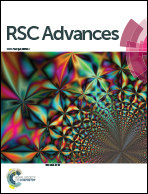Liquid oxygen compatibility and cryogenic mechanical properties of a novel phosphorous/silicon containing epoxy-based hybrid
Abstract
A novel phosphorous/silicon containing epoxy-based hybrid was synthesized by 9,10-dihydro-9-oxa-10-phosphaphenanthrene-10-oxide (DOPO) containing epoxy resin and 3-glycidoxy-propyltrimethoxysilane (GLYMO). It was compatible with liquid oxygen according to the liquid oxygen impact test. Furthermore, the hybrid possessed significantly enhanced thermal stability compared with the neat and DOPO containing epoxy resin and the silicon containing epoxy hybrid due to the phosphorous/silicon synergetic mechanism. It could be inferred that enhanced thermal stability had a positive effect on liquid oxygen compatibility. After one week of the liquid oxygen immersion test, the surface roughness of the hybrid changed less compared with that of the neat epoxy resin, implying the hybrid owned a higher crack resistance under cryogenic temperatures. Surface elemental content analysis showed that the hybrid possessed the lowest oxidative degree after the liquid oxygen impact test, proving that the phosphorous/silicon synergetic mechanism has worked on enhancing liquid oxygen compatibility. Besides, the incorporation of the DOPO and GLYMO prepolymers endowed the epoxy resin with improved ductility at both room temperature and 90 K, consequently leading to an increased fracture toughness. The above results lead to the conclusion that the synthesized hybrid has potential as the matrix material of composite liquid oxygen tanks.


 Please wait while we load your content...
Please wait while we load your content...